It is necessary for both you and your baby to stay safe, active and healthy throughout pregnancy. If you devote daily 30 minutes or 3 hours per week, your pregnancy and delivery will be much easier, and your body shape will also bounce back very quickly after the baby’s birth.
Look for low-impact exercises or activities that can help you manage the many pregnancy-related discomforts, including back pain, tiredness, and swollen feet.
Whether you do yoga occasionally or regularly, it is very beneficial during your pregnancy period. In addition to helping you physiologically, it may also assist you to calm down and relieve any anxiety you might be experiencing. Parental yoga is a very popular workout for pregnancy because it redesigns your belly shape after the child’s birth.
If you have not tried yoga yet, now is the perfect time to try it. Your belly and the upcoming cute creature will appreciate you. You don’t have to pay too much to learn advanced yoga procedures. Here are some of the best and most basic yoga poses that are very easy to do.
What Advantages Can Prenatal Yoga Offer?
Alike preliminary classes for child birth, parental yoga poses are multidimensional approaches to encourage mental health, stretching muscles and focused breathing. The best parental yoga poses are usually recommended because they are safe and can be very beneficial to both pregnant women and their unborn children.
Parental Yoga May:
- Make your sleep better
- Relieve you from anxiety and mental stress
- Encourage flexibility, strength
- Enhance the durability of muscles that are required during child birth
- Reduce lower back pain, headaches, nausea, and breathing difficulties
Parental yoga poses also give you a chance to see other expectant moms and reduce your stress of being a new parent.
How Does A Normal Prenatal Yoga Class Go?
Generally, a parental yoga class includes:
Breathing Poses:
You’ll be urged to concentrate on taking calm, deep breaths through your nose. Parental yoga poses are really helpful for you to reduce or manage stiffness in your breath during childbirth days and also make your muscles contract easily during labor.
Gentle Stretching:
You have to stretch and gently move various parts of your body, such as your neck, hips, and arms, to their range of flexibility.
Adopting Postures:
While sleeping, standing, sitting or lying on the ground, you will adopt different positions that may help you develop flexibility, strength, and balance. If you need support, use pillows under your arms, belly, and back.
Restoration and Relaxation:
After the parental yoga session, you will relax your muscles and restore your breathing rhythm and heartbeat.
Best Parental Yoga Poses:
There are lots of different parental yoga asanas, but here we are going to inform you of the best ones that are easy to do and very beneficial for you and your baby.
1. Standing Side Bend Stretch Pose:
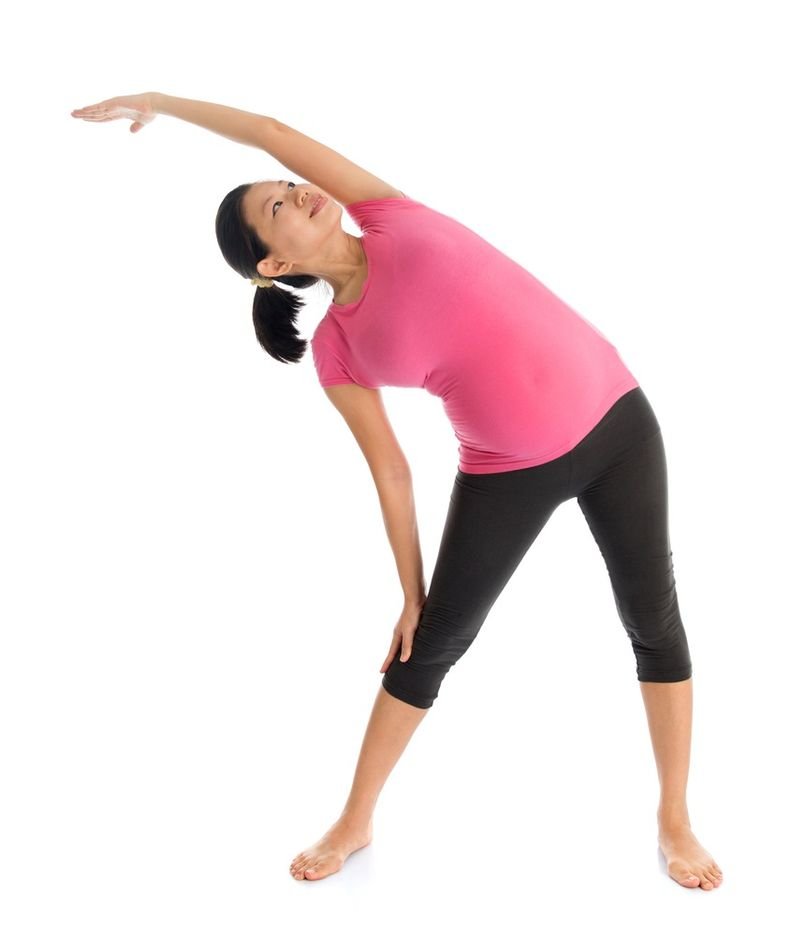
Target Regions:
- Upper back
- Shoulders
How to Do Standing Side Bend Stretch Pose?
- Stand on the mat
- Adopt Tadasana (conventional mountain pose)
- Make a 2- to 3-foot space between your feet
- Slightly bend on your right side and place your right hand on your right leg’s knee
- Raise your left hand and bend it slightly over your head
- Hold here for 30 to 40 seconds
- Move your arms back and make a mountain pose
- Do it on the other side
2. Wide knee child’s pose:
Wide knee child’s pose expands your hips, which reduces your chance of labor difficulties, relieves back discomfort, eases the pressure of a developing tummy, and reduces tension and anxiety.
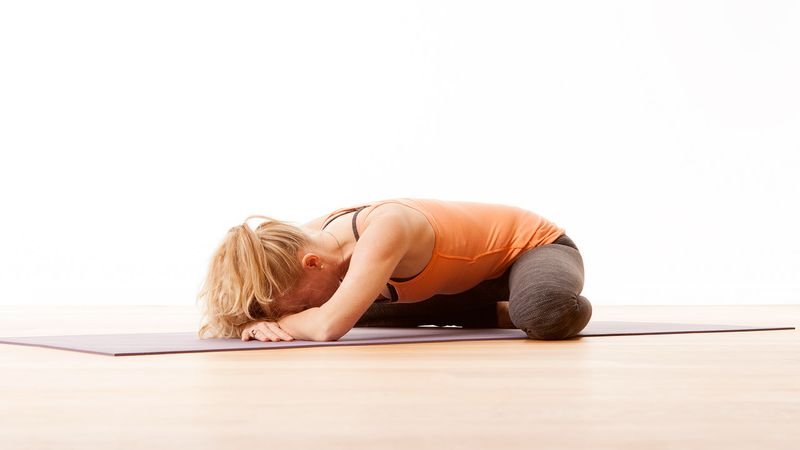
Target Regions:
- Back
- Hips
- Belly
How to Do Wide knee child’s pose?
- Make sure that your heels are touching the butt and your toes are touching the ground while kneeling on the mat
- Lay your chest down
- Place your forehead on the mat
- Extend your arms ahead of you
- Hold the pose for 3 or 5 minutes
- You can find variations in this pose by changing the positions of your hands
3. Bound angle/Butterfly pose (Baddha Konasana or Bhadrasana):
It widens your hips, making childbirth easier, and the pelvic opening reduces body fatigue.
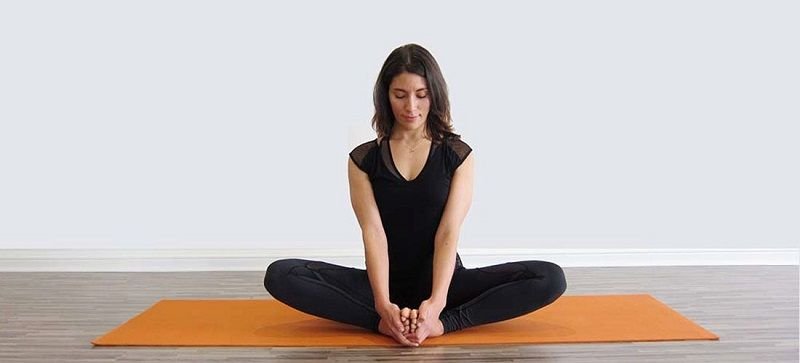
Target Regions:
- Thighs
- Knees
- Hips
How to Do Bound angle/Butterfly pose (Baddha Konasana or Bhadrasana)?
- Sit on the floor while touching your hips to the ground
- Stretch your legs in front of you
- Flex the knees and bring both heels together.
- Bring your heels close to your pelvis
- Try to lower your knees to touch the mat (gently press, don’t apply strong force)
- Try this pose when your groin and hips tight
- Hold the pose for 2 to 4 minutes
4. Cat-cow pose (Marjaryasana Bitilasana):
It gives you relief from shoulder and back pain and lessens the belly pressure. It also opens your hips. This is the simplest pregnant yoga pose. It is beneficial for later when your belly has gained weight and size.

Target Regions:
- Shoulders
- Back
- Belly
- Shoulders
How to Do Cat-cow pose?
- This pose has two parts; one is the cat part and the other is the cow part.
- Make sure your forearms remain straight so your shoulders are exactly above your wrists while getting down on all fours
- To get the cow part, raise your butt, lower your tummy, and lift your head
- To get the cat part, draw your back upwards, lower your head to look at your belly
- Alternate both the parts as you inhale and exhale
5. Garland or Squat Pose (Malasana):
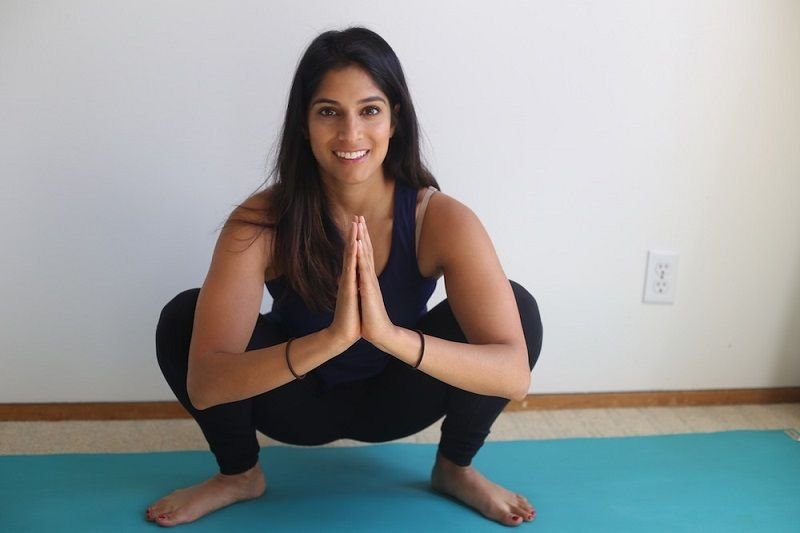
Target Regions:
- Hips
- Pelvis
- Belly
How to Do Garland or Squat Pose (Malasana)?
- Sit down on the mat
- Spread your legs outward in front of you
- Try to bring your foot close to your butt
- Lift your butt gently, putting weight on your feet
- Your knee must be wider than your shoulder width
- Stay here in this lifted pose for a few seconds
6. Easy pose (Sukhasana):
This is a meditation pose. It relaxes your mind and helps you cope with mental stress and anxiety. Minimizing lower back pain and opening hip muscles are its other major benefits.
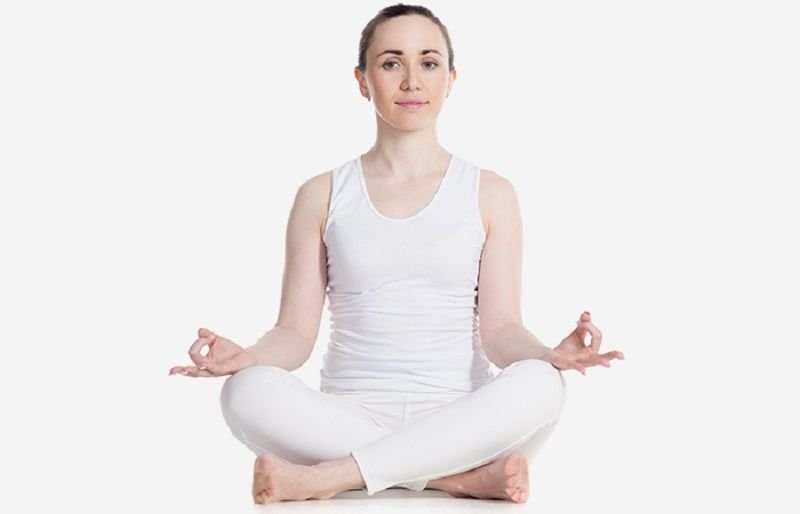
Target Regions:
- Back and hips
How to Do Easy pose (Sukhasana)?
- Sit on the mat with crossing you shins
- Make sure your feet are facing outward under the opposite leg
- Having your lower legs crossed means the legs must form a triangle with a straight line connecting them
- With palms facing upward, place your hands on your knees
- Hold the pose as long as you can
- Cross your shins the other way
- Repeat the pose
7. Corpse Pose or Mritasana (Savasana):
This is extremely relaxing pose. It also works as a meditation when you feel nervous or stressed about pregnancy.
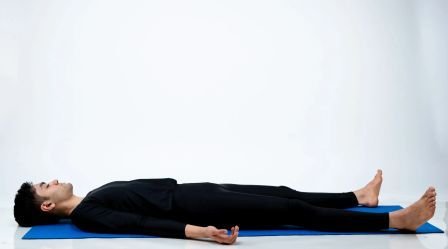
Target Region:
- Your mind
How to Do Corpse Pose or Mritasana (Savasana)?
- To perform Savasana, lie down on your back (or on your side if it is not good for pregnancy)
- If you need it, use a pregnancy pillow under your head, knees, and legs. For more support, you can also add another pillow under your belly.
- Be relaxed and feel just like you are in bed.
- Hold the pose for two or three minutes. It can also go for a long


Pingback: Pregnancy Yoga Balls - Benefits & Exercise of Birthing Balls During Pregnancy.